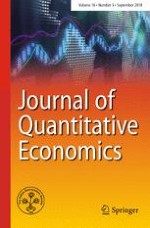05.10.2017 | Original Article
Quantifying the Landlocked Trade Penalty using Structural Gravity
Erschienen in: Journal of Quantitative Economics | Ausgabe 3/2018
EinloggenAktivieren Sie unsere intelligente Suche, um passende Fachinhalte oder Patente zu finden.
Wählen Sie Textabschnitte aus um mit Künstlicher Intelligenz passenden Patente zu finden. powered by
Markieren Sie Textabschnitte, um KI-gestützt weitere passende Inhalte zu finden. powered by
